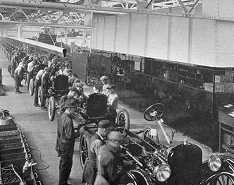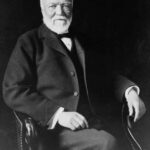Henry Ford is remembered as a titan of industry, not just for inventing the Model T or revolutionizing transportation, but for changing the very nature of how we think about labor, wages, and productivity. One of his most impactful (and controversial) decisions came not from the engineering floor, but from the payroll office—and it changed everything.
In the early days of Ford’s moving assembly line, the innovation was nothing short of revolutionary. Cars that once took over 12 hours to build could now be completed in just 90 minutes. Efficiency soared—but at a cost. The repetitive nature of the work was grueling and monotonous. Workers were no longer skilled craftsmen building cars from start to finish. They were cogs in a fast-moving machine, performing the same task, day in and day out.
Unsurprisingly, the turnover was brutal. It’s been said that Ford had to hire 10 workers just to get one to stick. People would walk off the job after just a few days, unable or unwilling to keep pace with the new production line. And every time someone quit, the entire line could grind to a halt—costing the company far more than just lost labor hours.
Related Post: How to Calculate the Cost of Employee Turnover
At the time, the average daily wage for factory work was $2.34. Ford, after analyzing the hidden costs of high turnover, made a move that shocked the business world: he doubled wages to $5.00 per day.
“Ford Has Lost His Mind,” They Said
The press and his competitors thought he was crazy. Paying workers double? At scale? It sounded like a recipe for financial disaster. But what happened next became a masterclass in business strategy.
- Turnover rates plummeted. Workers had a real reason to stick around.
- Productivity soared. More experienced workers meant smoother operations.
- The best talent flocked to Ford. Competitors’ top workers abandoned ship to work at Ford.
- Public relations exploded. Ford was suddenly a household name, not just for his cars, but for treating workers with dignity and fairness.
His competition, who had once mocked him, found themselves with the opposite problem: their labor pools dried up. They now had to deal with higher turnover and lower-quality hires, while Ford enjoyed a stable, loyal, and more productive workforce.
Ford didn’t just increase wages out of the kindness of his heart—he saw the bigger picture. The move was a calculated risk designed to solve a costly problem and differentiate his company in the labor market. And it worked.
The Bigger Lesson for Today’s Business Owners
What can entrepreneurs learn from this century-old example?
Sometimes, the solution to a business problem requires stepping outside of industry norms and questioning what everyone else is doing. Ford’s competitors were fixated on minimizing labor costs—he looked at total productivity, turnover, and brand reputation. While others were trimming costs, he invested in people and ended up saving far more in the long run.
It’s the perfect example of a principle known today as total cost thinking—recognizing that the sticker price of something (like wages) may not reflect its full economic impact on your business.
It’s also a powerful lesson in employee retention. Ford understood that hiring, onboarding, and training were expensive. Losing workers after just a few days wasn’t just inconvenient—it was unsustainable. By paying more, he bought loyalty and consistency, which paid off exponentially.
And let’s not overlook the marketing windfall. The wage increase made headlines. Ford’s name became synonymous with innovation—not just in machines, but in management.
Related Video: Be Polarizing on Purpose
Would You Be Willing to Be Called a Fool?
Sometimes, bold moves don’t look logical on paper. They may even seem foolish to outsiders. But when you’ve taken the time to think through your business holistically—factoring in costs that others ignore—what seems irrational may actually be revolutionary.
Ford bucked conventional wisdom. He wasn’t trying to be generous. He was trying to build a better, more efficient, and more resilient business. And in doing so, he proved that thinking differently often delivers outsized rewards.
So, the next time you face a difficult business challenge—whether it’s high employee churn, poor customer retention, or stiff competition—ask yourself: What would Henry Ford do?
What “foolish” move could you make in your business that others might mock—yet might just give you the competitive edge?












